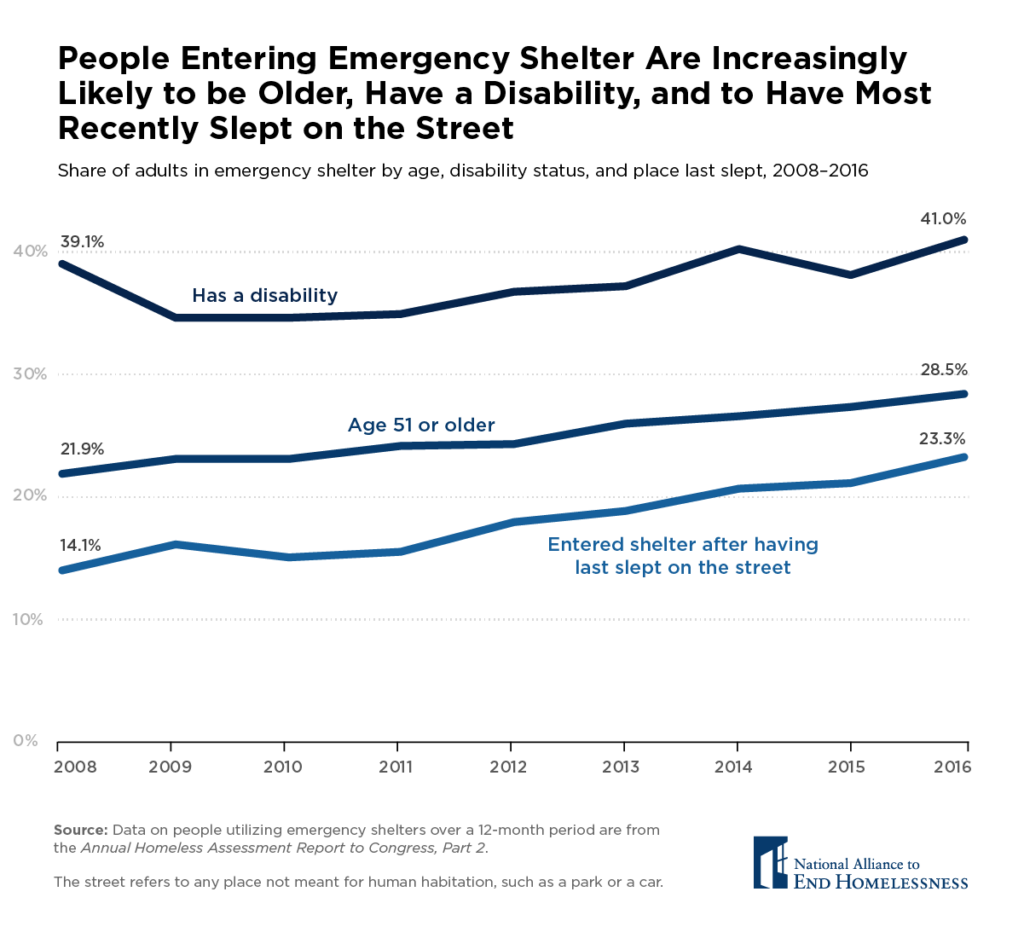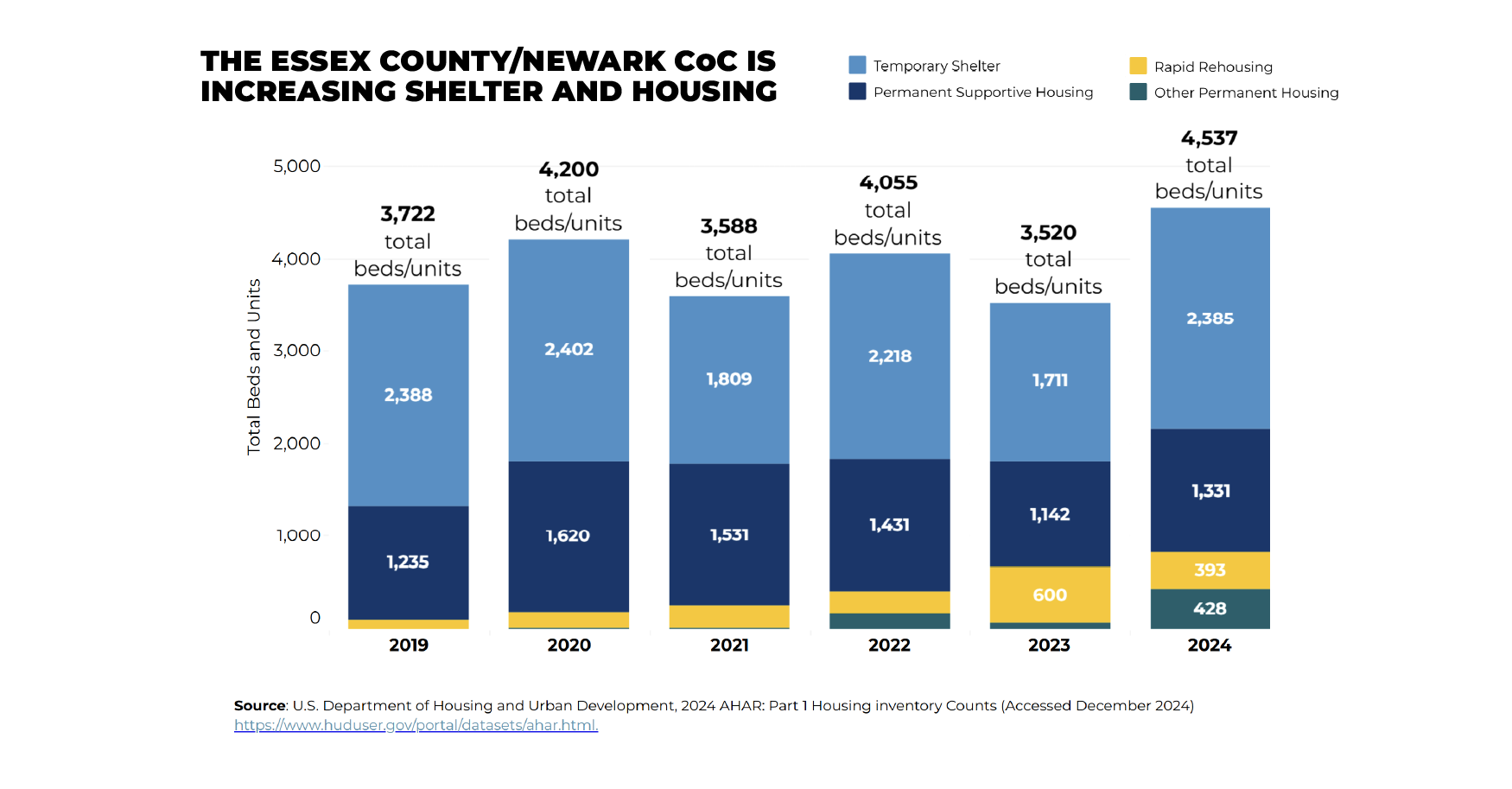Emergency shelters play a critical role in a community’s homelessness response system: they provide an immediate place to stay while people reconnect with housing. Shelters work best when people can enter and exit rapidly, with an appropriate level of services for their needs.
However, emergency shelters nationwide are seeing an increase in the share of adults entering their programs who are older, who report having a disability, and who come from unsheltered locations. This shows that emergency shelters serve an increasingly vulnerable population, one that may face higher barriers to housing or have greater needs for services and supports.
These trends underscore the need for federal and community resources to meet growing demands. They also highlight the importance of low-barrier shelter models that can rapidly connect people with housing and support services.

Stay Updated: Solutions, Stories, and Ways to Make an Impact
Sign up to receive updates on the Alliance’s work, including the latest research, advocacy efforts, and real stories of progress — plus ways you can help drive lasting change.












